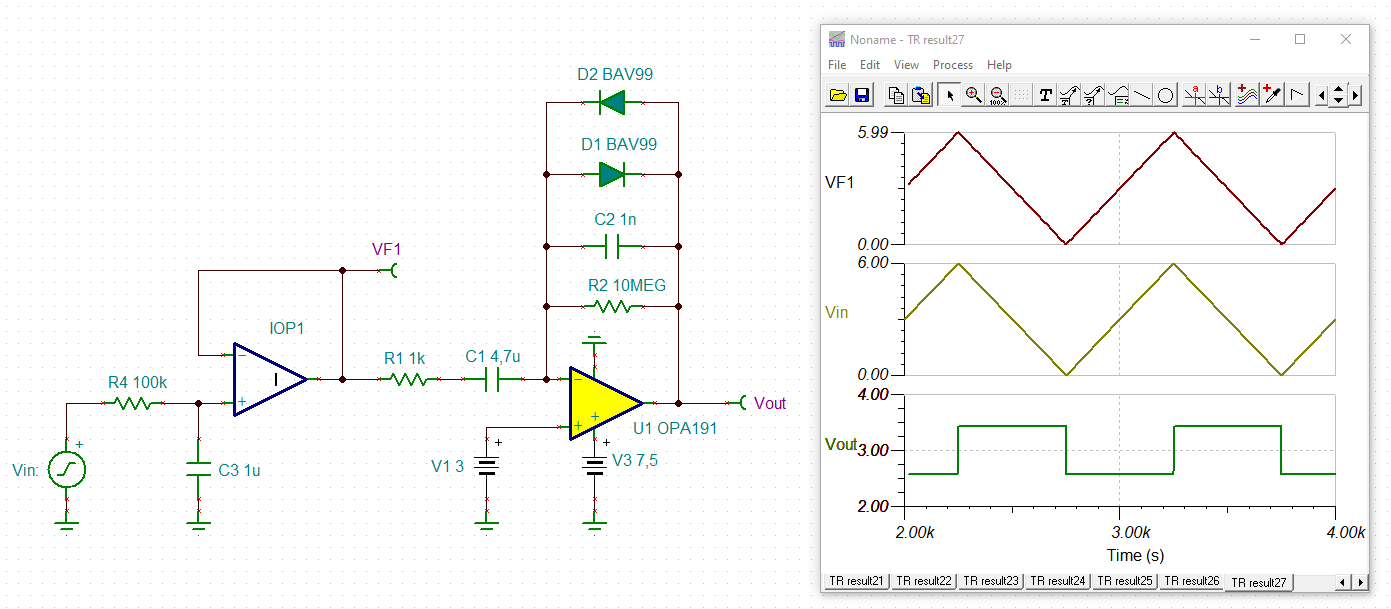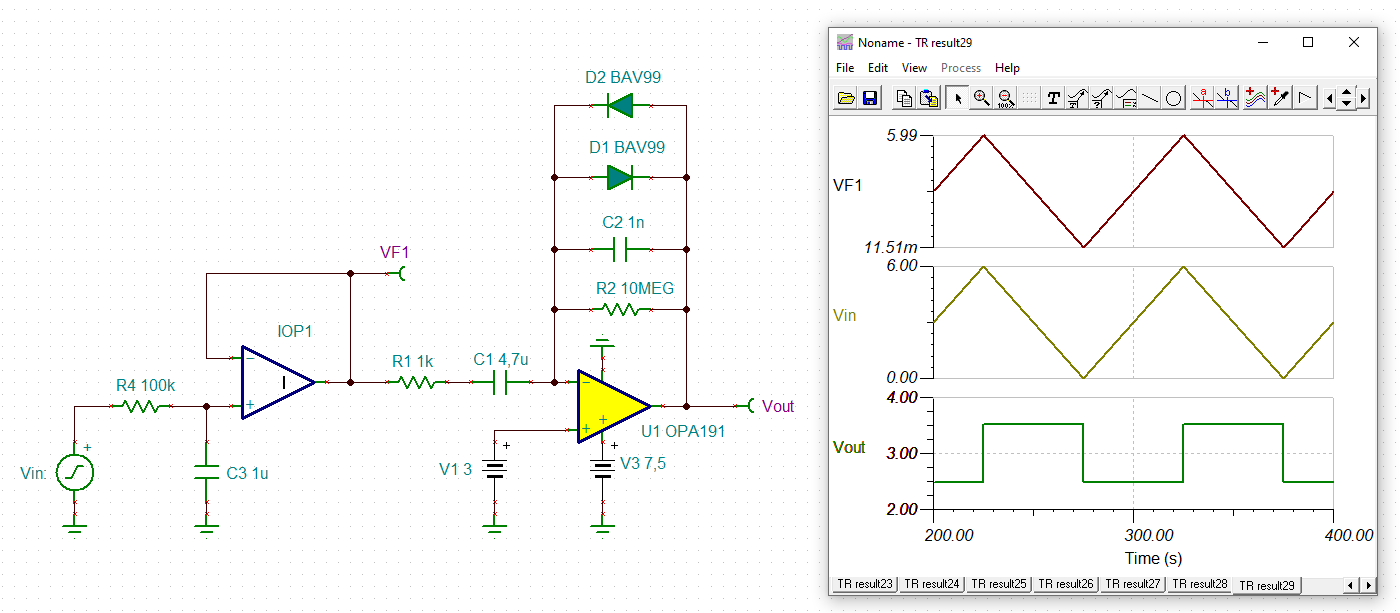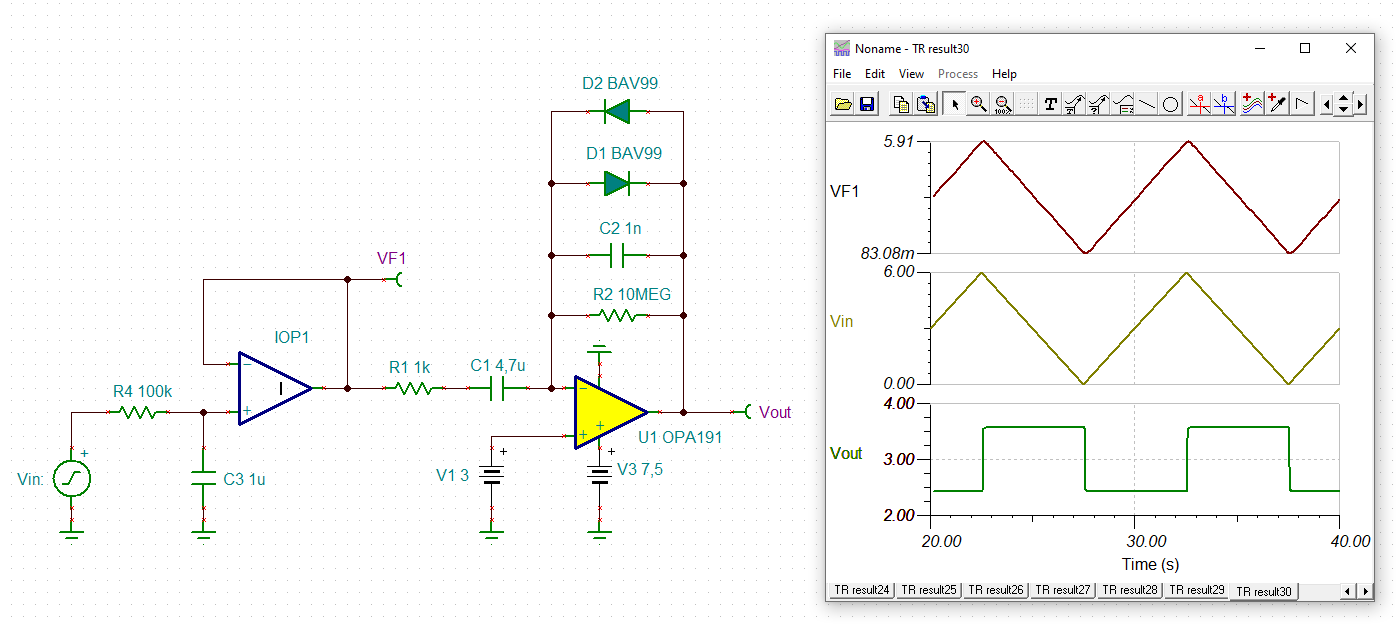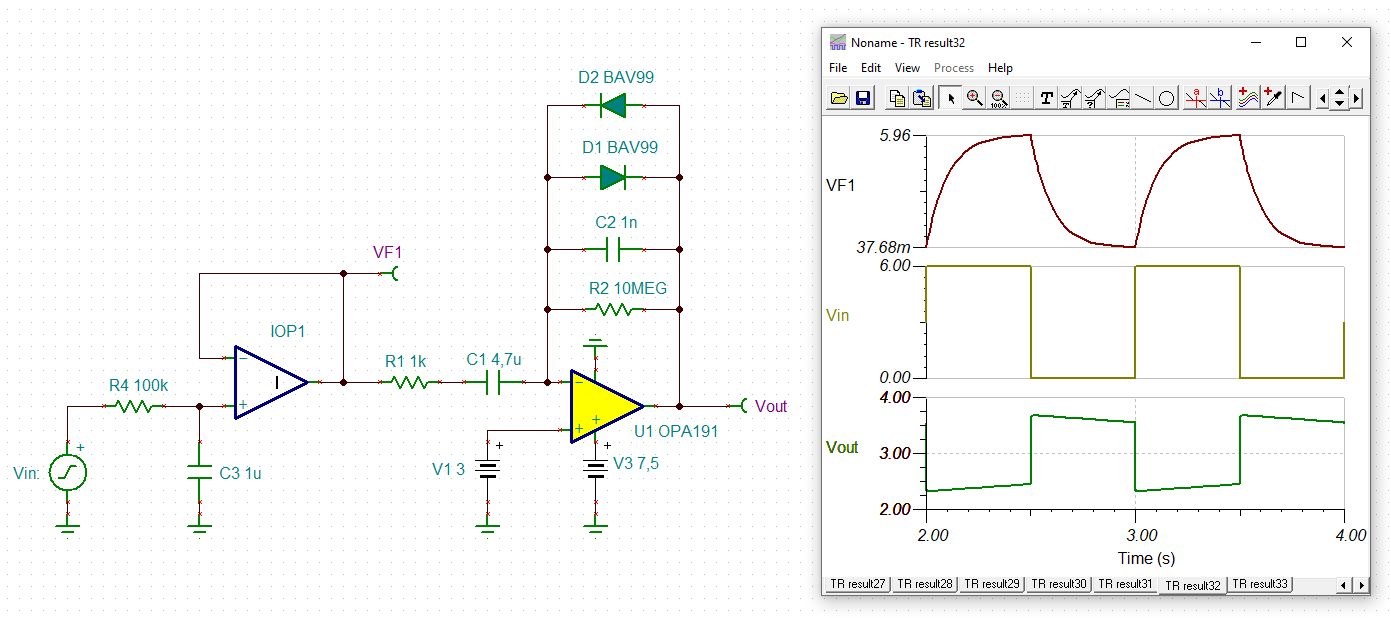Other Parts Discussed in Thread: TMAG5111, OPA191
Hi,
Any design suggestions to determine the acceleration out of the LM2917? Basically a tachometer, a hall affect sensor (TMAG5111) input to the LM2917, input frequency range from 0 to 400 Hz. The DC output from the LM2917 is where I want to determine acceleration, I was thinking about a differentiator op amp circuit design to a comparator to determine positive acceleration or negative acceleration. I don't need a value for the acceleration just need to determine if the speed is changing, and in what direction, going faster or slower.





